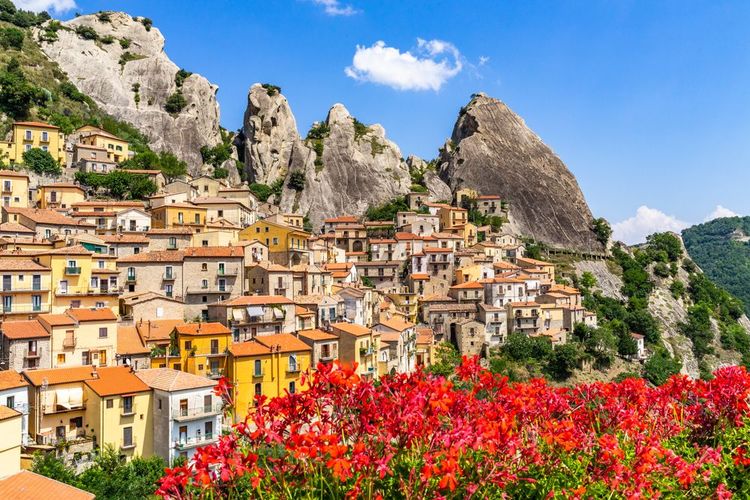Surrounding yourself with art isn't all that difficult when your destination is as rich in creativity as Italy. Every street corner can be a work of art, something to wake up inspired and excited about every day. A trip to Italy allows you to integrate art into your daily life.
A trip to the Italian peninsula is every traveller's dream. Experiences such as relaxing in a Venetian gondola, sipping fine wine in Tuscany and tossing a coin into the Trevi Fountain are often on travellers' bucket lists. For art lovers, Italy occupies a special place in their tourist fantasies. Each region and city tells a different artistic story. With centuries of history steeped in art and culture, the country is brimming with beautiful works of art just waiting to be discovered and admired. And the best way to appreciate it all is to plan your art trip so you don't miss a single work.
Italy promises an incredible journey through the world of art, filled with amazing architecture, curious museums, magnificent paintings, breathtaking sculptures and marvellous music.
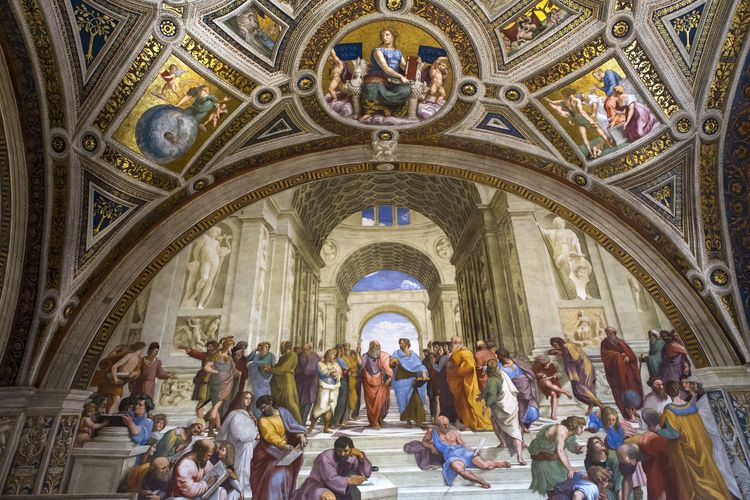
The Sistine Chapel frescoes in the Vatican
- © Isogood_patrick / Shutterstock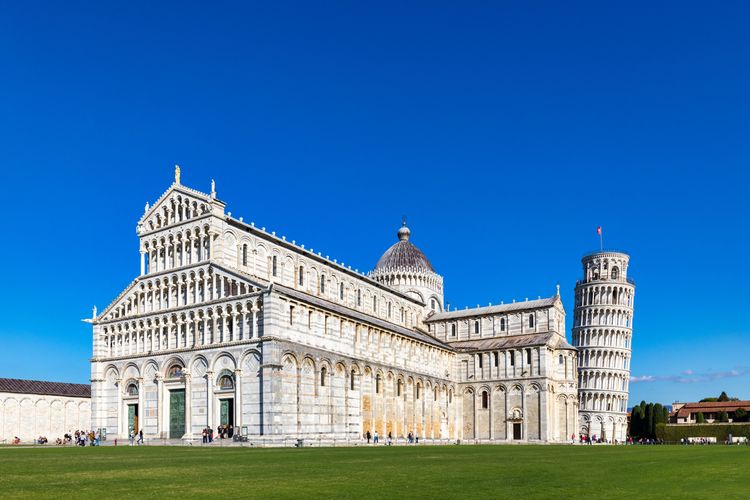
Pisa Cathedral and the Leaning Tower of Pisa in Pisa
- © DaLiu / ShutterstockThe country is a vast treasure trove of the world's best-known and best-loved masterpieces. Cradle of the Baroque and Renaissance, the beautiful boot fascinates with its grandiose, almost infinite history. From Milan to Rome, via Naples and Florence, Verona to Sicily, Italy is home to historical and artistic gems that date back to the Etruscans and Antiquity, right through to the Greek and medieval periods.
A trip to Italy means drowning in an abundance of art, from small isolated villages to major cities. You'll find ancient sites, medieval villages, magnificent churches, exceptional frescoes and mosaics, renowned museums, UNESCO World Heritage sites and Italy's finest contemporary art and architecture. Priceless works of art that bear witness to a past of unalterable beauty.
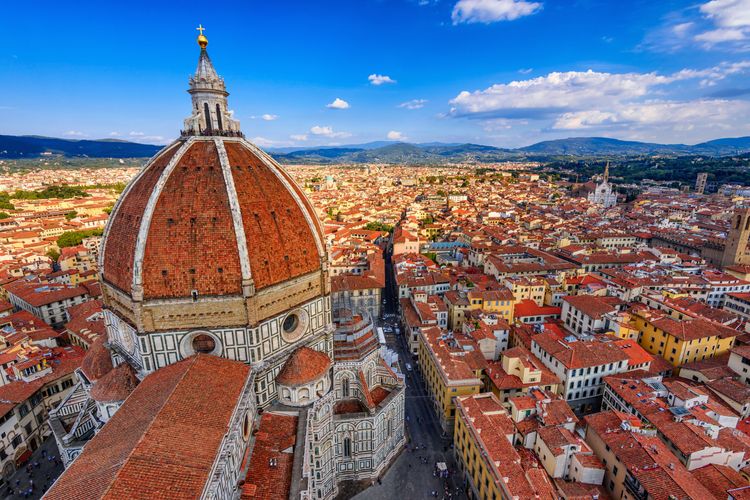
Florence
- © Catarina Belova / ShutterstockHistory of Italian art in 3 periods
Travellers to Italy are often mesmerised by the sheer beauty of the country, and it's no wonder that some of the world's most renowned artists have been inspired by it. The history of Italian art is often divided into three periods: the prehistoric period, with cave paintings and petroglyphs; the classical period, characterised by architecture and sculpture; and the Renaissance, which saw a revival of interest in Greek and Roman art.
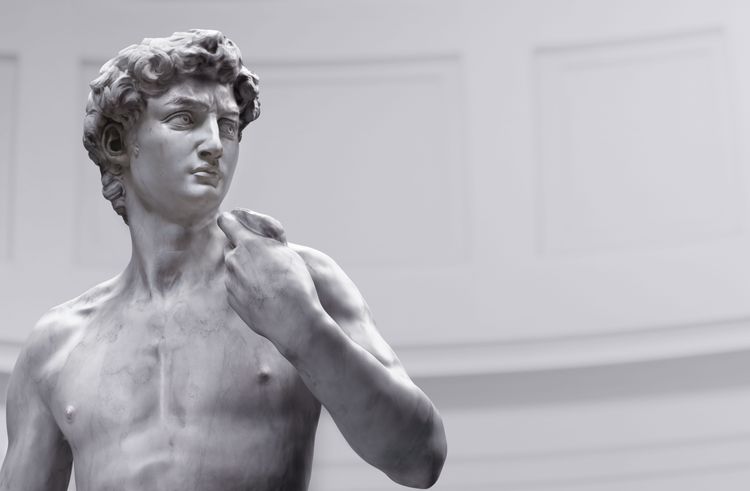
Statue de David par Michel-Ange à Florence
- © Corona Borealis Studio / ShutterstockFrom the Renaissance to the Baroque
Travelling to Italy is like stepping back in time. From the Renaissance to the Baroque, Italian art has had a profound impact on the world. A visit to Italy is not complete without discovering the most famous art museums. The Renaissance began in the 14th century and reached its peak in the 15th century. It was a period of great political, social and artistic change in Europe. Italian artists such as Leonardo da Vinci and Michelangelo Buonarroti used new techniques and perspectives to create works that are now some of the most iconic in history.
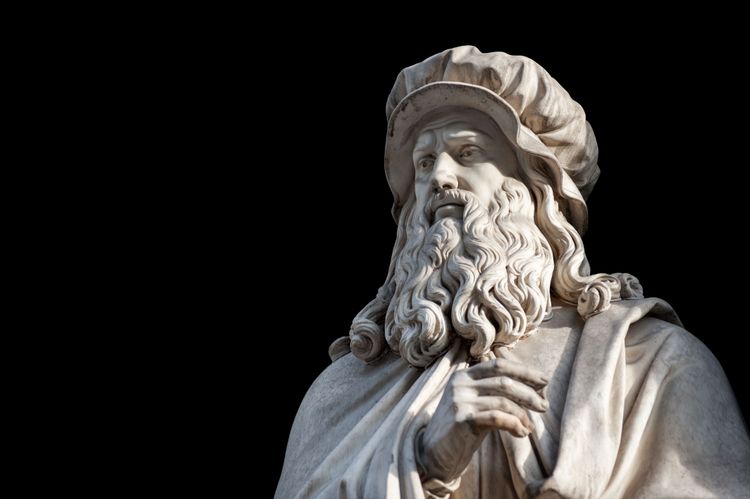
Statue of Leonardo da Vinci, by Luigi Pampaloni, 1839. It is located in the Courtyard of the Uffizi in Florence.
- © Federico Magonio / ShutterstockThe Baroque period
The Baroque period began in the early 17th century and ended in the 18th century. It was characterised by the spectacular use of light and shade. Artists such as Gian Lorenzo Bernini and Caravaggio were pioneers of this movement.
Gothic and Renaissance
These two styles are the most widespread in Italian art and have a long history. They were strongly influenced by the classical world, but adopted different approaches. Gothic art is more vertical in design, while Renaissance architecture is more round or circular.
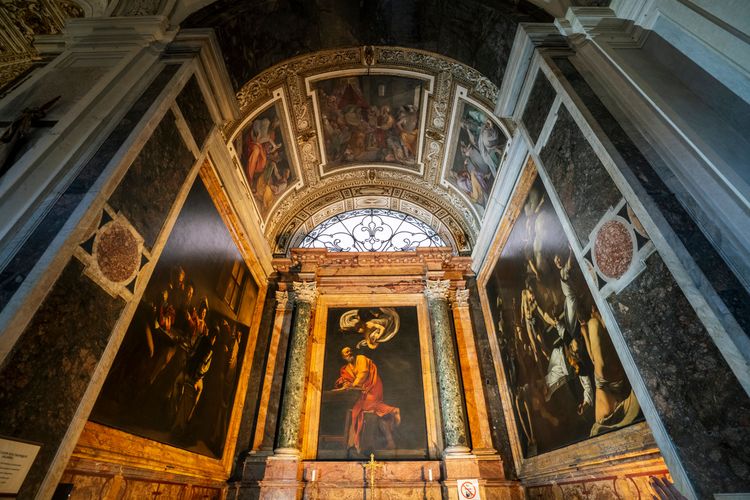
Baroque paintings by Caravaggio at Santa Maria del Popolo, Rome
- © j_rueda / ShutterstockSome cities for art
Rome
From the history of the Roman Empire to the Colosseum and the Trevi Fountain, Rome is one of Italy's most visited cities. In terms of sculpture, Michelangelo's Moses can be found in the Basilica of San Pietro in Vincoli. The Gallery of Mirrors in the Renaissance Palazzo Doria Pamphilj and the Basilica of Peter, the largest Christian basilica in the world, are two big must-sees in Italian art.
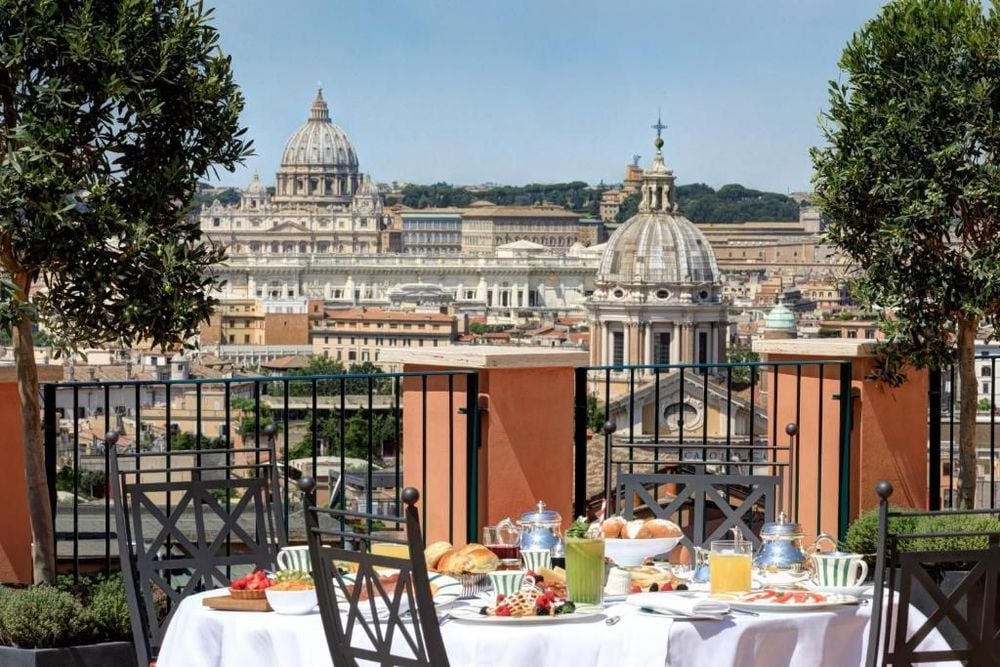 Italy
Italy
Rocco Forte Hotel De La Ville - Rome
Boasting a magnificent location just above the Spanish Steps, a 10-minute walk from the Trevi Fountain, the Rocco Forte Hotel De La Ville has 3 restaurants and a spa.Vatican City
Rumour has it that the Vatican Museums house the largest collection of art in the world. Located in the middle of Rome, Vatican City is a UNESCO World Heritage Site, as it is home to St. Peter's Basilica, the largest religious building in the world.
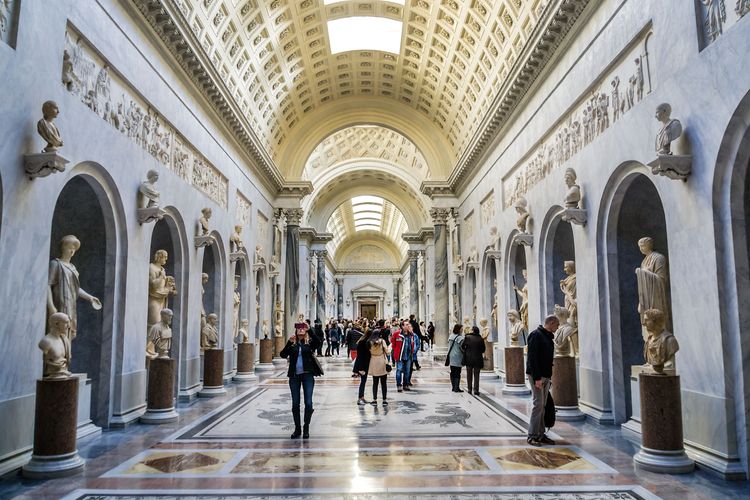
La galerie des statues au Vatican
- © Kiev.Victor / ShutterstockNaples
For art lovers, Naples is one of the country's most underrated regions. The city is home to some of the most incredible Gothic churches in the world. From the Duomo di Santa Maria Assunta, a UNESCO World Heritage Site, to the magnificent San Domenico Maggiore. The church of Santa Chiara was built in the 14th century and has a simple yet elegant façade adorned with intricate carvings, and the interior is truly breathtaking.
Pisa
Located in the very popular region of Tuscany, Pisa boasts one of Italy's most iconic structures: the Leaning Tower of Pisa! Construction of the tower began in 1173, but due to shifting ground beneath the foundations, it began to lean as early as 1178. The Tower of Pisa contains seven bells on its seventh floor, intended to symbolise each musical note.
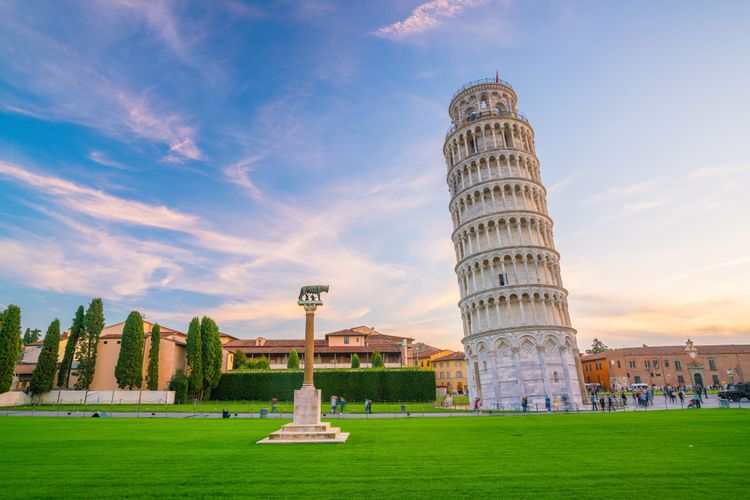
The Leaning Tower on a sunny day in Pisa, Italy.
- © f11photo / ShutterstockFlorence
Florence, the home of Renaissance art, is home to a multitude of works such as Michelangelo's David, Botticelli's Birth of Venus and Leonardo da Vinci's Annunciation. From the Uffizi Gallery (which contains works by Italian Renaissance artists such as Leonardo da Vinci and Michelangelo) to the Opera Museum, it will take at least a week to explore each collection of historic art.
Milan
Milan is the only place in the world where you can admire Leonardo da Vinci's Last Supper, completed in 1498. For this alone, the destination is an art must-see. No trip to Milan is complete without a visit to the majestic Duomo di Milano, one of the largest cathedrals in Italy and Europe.
Venice
When you imagine Venice, you immediately see narrow streets and waters filled with gondolas. But this beautiful city is also home to Raphael's Madonnas, Italy's oldest café (Caffè Florian), the Accademia galleries and Baroque churches.
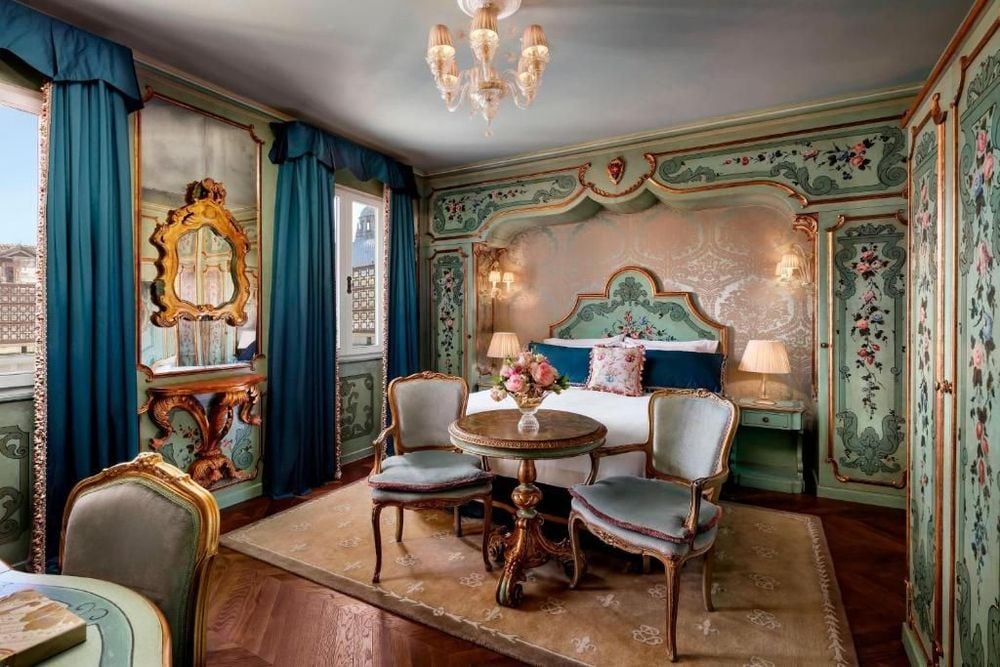 Italy
Italy
The Gritti Palace, a Luxury Collection Hotel - Venice
The Gritti Palace has been restored to its former splendour. It occupies a former noble residence on Venice's Grand Canal, overlooking the Basilica of Santa Maria delle Salute.Sicily
Sicily seems to be a living museum of ancient history, with its Greek temples and Roman theatres. Few places in Europe can match this island for the quantity and quality of its ancient remains.
The best ancient sites in southern Sicily
👉 Agrigento's Valley of the Temples is home to some of the best-preserved Greek temples in the world. Built in the 5th century BC the imposing structures are silent testimonies to classical Greece.
👉 Segesta was one of Sicily's most powerful cities during Greek civilisation. Although its inhabitants were eventually driven out by the Carthaginians, they left behind a Doric temple that stands atop a hill overlooking the valley.
👉 Syracuse's Roman amphitheatre was built in the 2nd century AD and could once seat over 15,000 spectators. Today it is still used for concerts and other events.
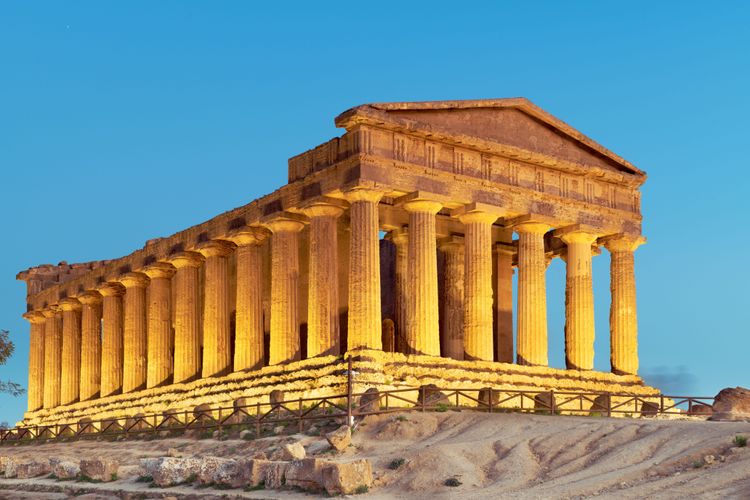
Temple of Concordia at dusk in Agrigento.
- © Sean Pavone / Shutterstock👉 Taormina's Greek Theatre was originally built by the Greeks in the 3rd century BC, then later enlarged by the Romans to be used for plays and gladiatorial combat. Today, it is still a showplace, with a breathtaking view of Mount Etna in the background.
